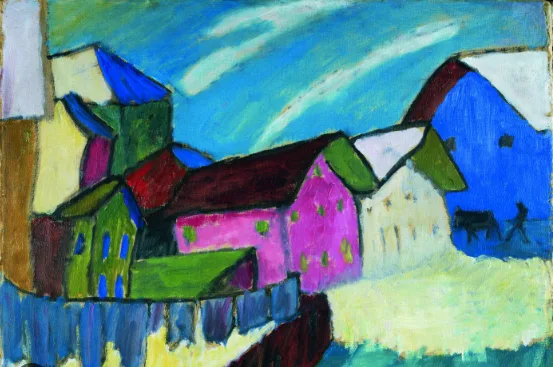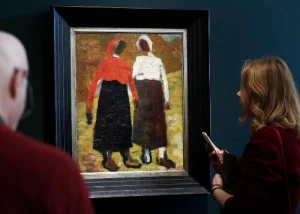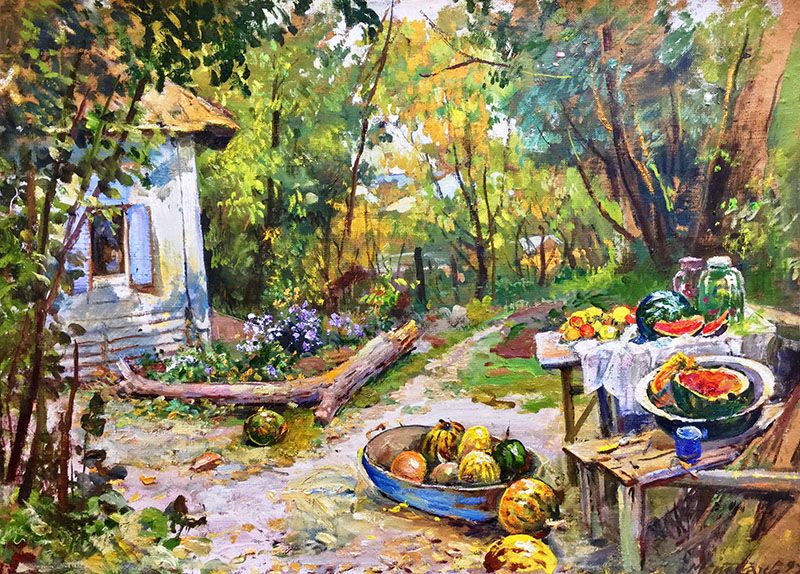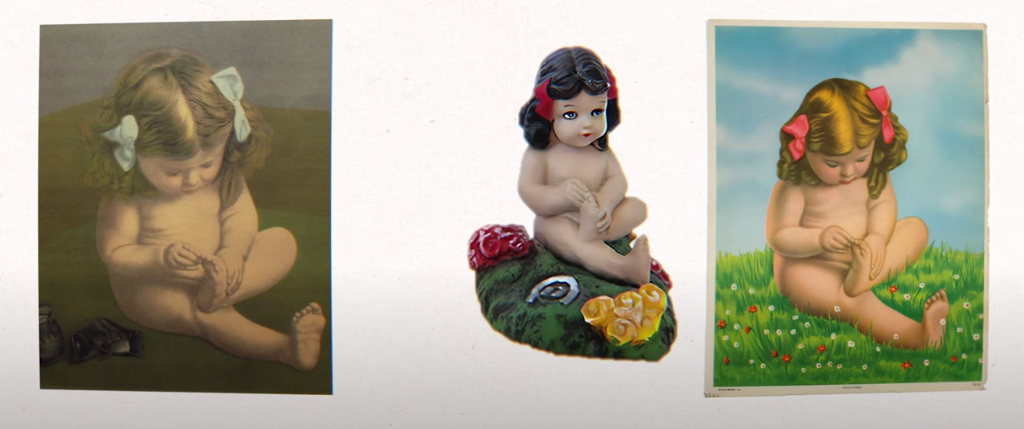
The truth about “The little girl with the thorn.” “La Nigüenta” “Chubby Fingers” or “This Little Piggy.”
I had seen this image for years in houses, in the fields in Latin America, and I remember something about a girl counting the toes or something like that.
Naturally, my first instinct was to dive headfirst into the internet. And there was the image I had in mind, or so I thought, because studying this image led me down a rabbit hole of research and different names for the same painting: “Chubby Fingers” and “This Little Piggy.”
I realized that several antique dealers had different versions of it, but all seemed to agree that it was probably from the Victorian era, according to its style, at least from the 1900s. So it was about 30 years old or more. However, something in the back of my mind told me that this was not the image we were looking for. Right? I changed my search to Spanish, and there it was. This was the correct image.
But things got interesting. The two images, the one I found first and this one, look alike, but not quite, but yes, but no, but yes. And moreover, this image was not exclusive to the Dominican Republic, its presence extended throughout Central America, particularly to Costa Rica, and a new name emerged, a possible title for the image: “La Nigüenta.”
This revelation unleashed a slew of articles about the image, giving it a supposed origin and history, but the image is more than just an image. Because it was so widespread on all sides, it was already what we call today a meme, a shared experience. So I decided to ask you, to see what experiences you’ve had with this image. The response was overwhelming, and it revealed a spectrum of beliefs and theories.
Some suggested that the girl in the image could be a real person from Santiago, others said she lived in Barahona. Some of you even noticed a curious detail: the girl seems to have only nine toes on both feet. And besides that, several of you pointed out a series of recent articles in which the identity of the girl is revealed as Carmen Saleta de Ricard, a 98-year-old woman from Santiago who now lives in Miami. She even has a photo to prove it. So there you have it, the image is a copy of a photograph of this lady, except for the version of the image that supposedly is over 130 years old. I firmly believe in the idea that everything has already been investigated, and others much smarter than I have already studied this phenomenon, and that’s indeed the case; most of the research seemed to indicate Costa Rica as the origin of the image.
Costa Rica, the land of Pura Vida, bathed by two oceans, land of peaks, where people are characterized by their legendary cordiality and friendly nature, considered among the happiest in Latin America. But here, the girl was mainly known as a statue and had become a saint. An article from La Nación, a Costa Rican newspaper, tells us that Francisco Ulloa Báez, a sculptor from San Vicente de Moravia, is credited with creating La Nigüenta.
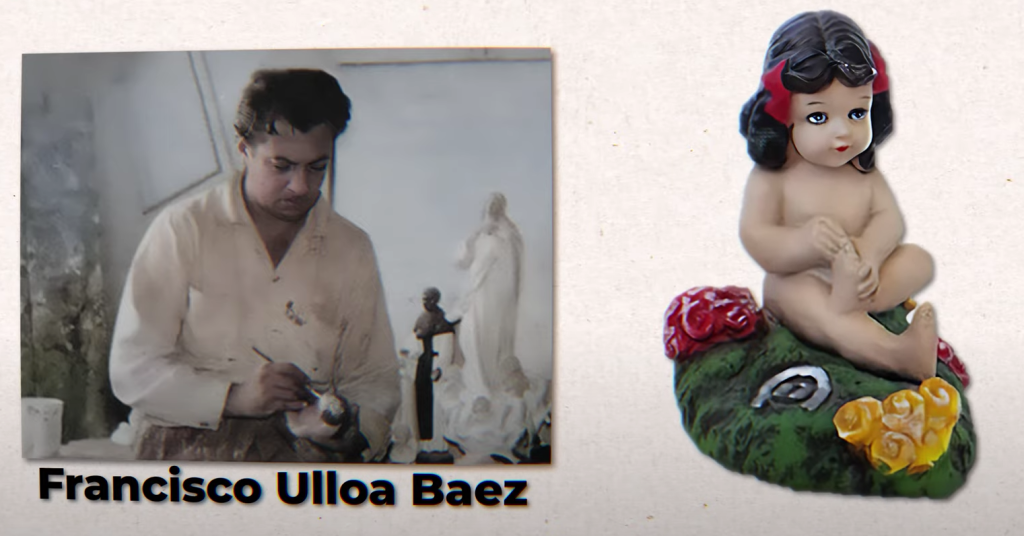
The story goes that in the 1950s, a friend’s business received a large shipment of artistic prints from Germany, including many of this girl. Noticing how quickly they sold, Uyoa was inspired to create a plaster version to sell at the Central Market of San José. The statue sold like hotcakes; the figure became especially popular in rural areas where religious items were also sold, such as statues of Jesus and statues of Costa Rica’s patron saint, the Virgin of Los Ángeles. But curiously, sometimes the girl sold better than the Virgin herself because a rumor arose that she brought good luck.
One of the sellers of this statue explains: “This was a very poor family, so poor that they didn’t have money to buy clothes for their children. Here, well, the little girl naked, she’s in the field taking off the “anigua“, the insect was like that in that position, seeing the finger, when she saw something shining on the ground. She picked it up, went home with the object she had found, gave it to her dad, and her dad, amazed, asked her where she had gotten that. It turns out it was a gold coin. They went to where the coin was, and they found a treasure there. That’s why we say La Nigüenta is for good luck.”
Attributing a story to an object creates reliability. But how did that story come about? Among other things, it’s pure speculation, but I dare say it was the street vendors and merchants who contributed. It’s a very common theme to attribute an inherent quality to a product to sell it better because personal conviction plus emotional connection gives us belief. And that, in turn, leads to sales. This works especially well when people are already predisposed to superstition.
Here we pray to La Nigüenta, huh? The one that doesn’t count. Some say that the tendency of rural Costa Ricans to believe in lucky charms originated in the indigenous practice of attributing magical properties to objects and figures, mixing these indigenous customs with the Christian tapestry, resulting in trends such as the veneration of La Nigua alongside Jesus and the Virgin.
So there, you can put the saint of Juárez and then the one of the Virgin and a woman arrives like me, at your house, then we could put it like La Pura in Radita, there was a little table, a receiver, and what they say, “Ah, we put it here,” but my neighbor put it on La Pura’s side. The little plaster doll quickly became a sales hit, which led Ulloa and his team to produce several versions and incorporate symbols of good fortune such as a horseshoe, a four-leaf clover, and the number 13.
It is said, according to tradition, that you have to put ribbons on it: red is for success and love, yellow is for money, white is to keep away a bad neighbor, and blue is for health. You can also offer it offerings. Every new year, you put a red sachet filled with grains so that there is no shortage of food throughout the year, and you can add some coins. Soon, other artists and even manufacturers in China began to produce their versions, extending La Nigüenta’s fame beyond Costa Rica’s borders, especially to Panama, Nicaragua, but also Honduras, Colombia, and other places. Today, it is difficult to find a house in Costa Rica without a La Nigüenta. It became an essential figure of Tico culture, especially because it was said to only bring good luck if one received it as a gift. Therefore, it is customary even today to give a La Nigüenta when visiting someone.

